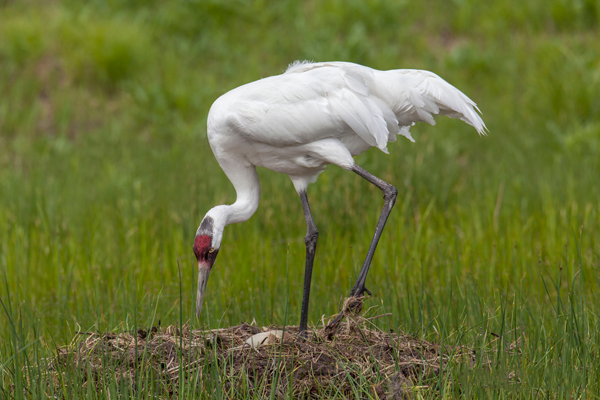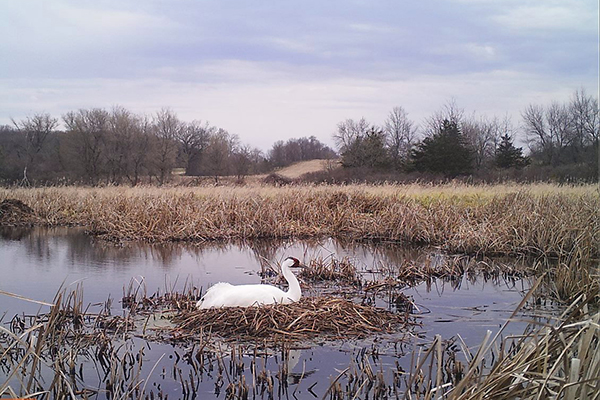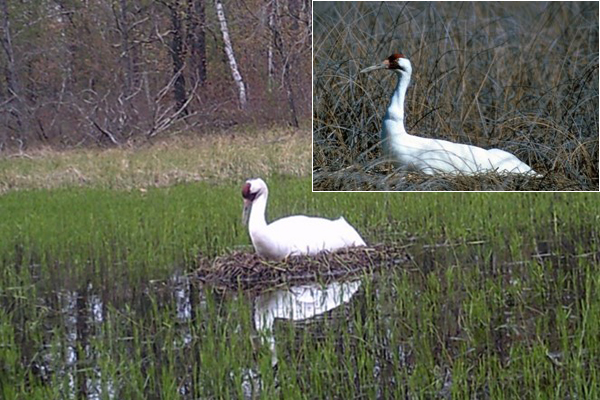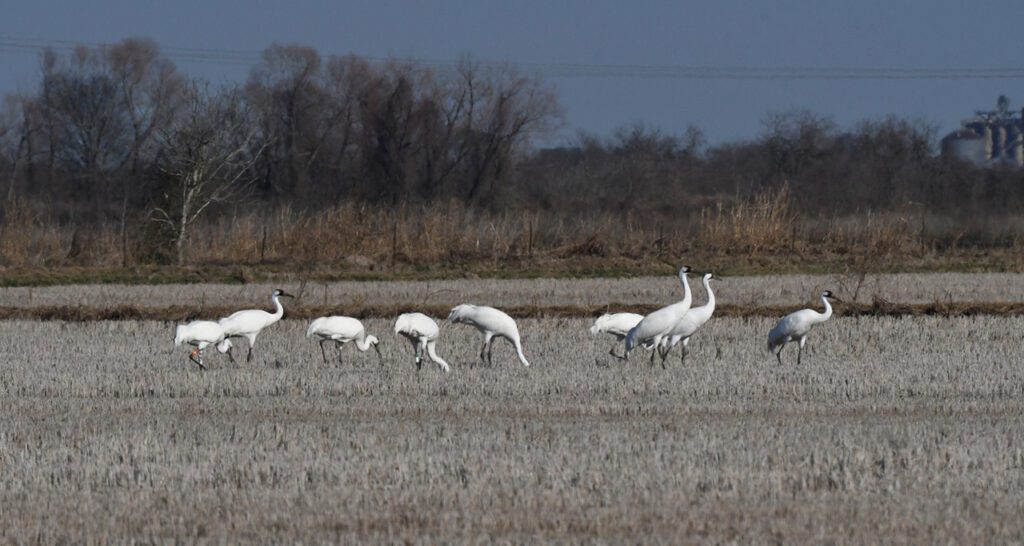Staying Alert: The link between habitat, weather, and vigilance in nesting Whooping Cranes

Whooping Cranes (Grus americana) are a long-lived species, and in the wild, they can live for 25-30 years and begin breeding at two to three years of age. Once breeding, an individual crane will lay one to two eggs per nesting attempt and typically raise one chick each year. Unfortunately, this can make the species more vulnerable to individual losses in the population when compared to birds that lay large clutches and raise multiple chicks each year.
The leading cause of early-life mortalities for Whooping Cranes is, unfortunately, predation. However, parents who are vigilant of their surroundings while at the nest may be more adept at preventing predation of their offspring. This can come at a cost, though, as excessive vigilance behavior due to nearby disturbances can also be damaging, as it takes time away from important behaviors like foraging and resting. The amount of energy and time a parent puts into being vigilant at the nest can also be a product of their age, previous nesting experience, and surrounding habitat quality. Large, open wetlands dominated by herbaceous vegetation are considered high-quality nesting habitats.
A study conducted by the International Crane Foundation in 2019 asked the question, “How does the environment where a Whooping Crane nests influence how often they are vigilant?” Understanding the interaction between the surrounding habitat and the amount of vigilance displayed at the nest could also be vital to helping our team unravel more about which factors are contributing to the low productivity of the population.

This study sought to determine how individual nest and bird characteristics, such as their distance to the nearest forest, previous nesting experience, age, and surrounding environmental variables, influenced how frequently incubating Whooping Cranes were observed being vigilant. Monitoring nine nests within Necedah National Wildlife Refuge and the neighboring Meadow Valley Wildlife Area, our team recorded Whooping Crane behaviors from cameras deployed at the nests. We also took measurements of the surrounding habitat to gain insight into the role different types of wetlands play in vigilant behaviors.

Two Whooping Cranes displaying comfort behavior (left) and alert behavior (inset). These behaviors can be differentiated by the angle of the neck and the direction of the head/beak. International Crane Foundation nest camera photo and R.D. Muir
Two Whooping Cranes displaying comfort behavior (left) and alert behavior (inset). These behaviors can be differentiated by the angle of the neck and the direction of the head/beak. International Crane Foundation nest camera photo and R.D. Muir
Our team found that as precipitation increased, the time the cranes remained vigilant decreased, and cranes located closer to forests (25-30m) were around 12 percent less vigilant than those located farther away. Interestingly, cranes were most vigilant when located in medium-sized wetlands compared to those nesting in small or large wetlands. On average, Whooping Cranes remained vigilant ~22 percent of the time while incubating, with more vigilance being displayed during the daytime hours rather than at night.
Vigilance also seemed directly linked to visibility at any given time, as shown by the decrease in vigilance during periods of high precipitation and at night. This could be due to a decrease in visual awareness, obstructions to their line of sight during these times, or a decrease in predator activity also impaired by less visibility, as the predators would be less likely to be out hunting and searching for nests when it was hard to see.
The relationships this study reported between vigilant behaviors and outside environmental factors are extremely useful and have identified that medium-sized wetlands close to forests may provide a safer environment for nesting cranes. This information can now help guide habitat management, especially around Whooping Crane nests that may be continuously struggling year after year. That having been said, our team also identified that more research, including with a wider range of ages and across all breeding areas in Wisconsin, is likely needed to supply more concrete evidence of a relationship between vigilance at the nest and nest success because all nine nests we observed successfully hatched at least one chick.
We thank Nicki Gordon, Darby Bolt, and Hillary Thompson, the authors of the paper “Vigilance of Nesting Whooping Cranes in Juneau County, Wisconsin,” for permitting us to share their work.
Story submitted by Eleanor Laack, Crane Conservation Fellow, and Stephanie M. Schmidt, Lead Outreach Biologist, International Crane Foundation.
Reference: Gordon, N.M., Bolt, D.P., Thompson, H.L., 2022. Vigilance of nesting whooping cranes in Juneau County, Wisconsin.


